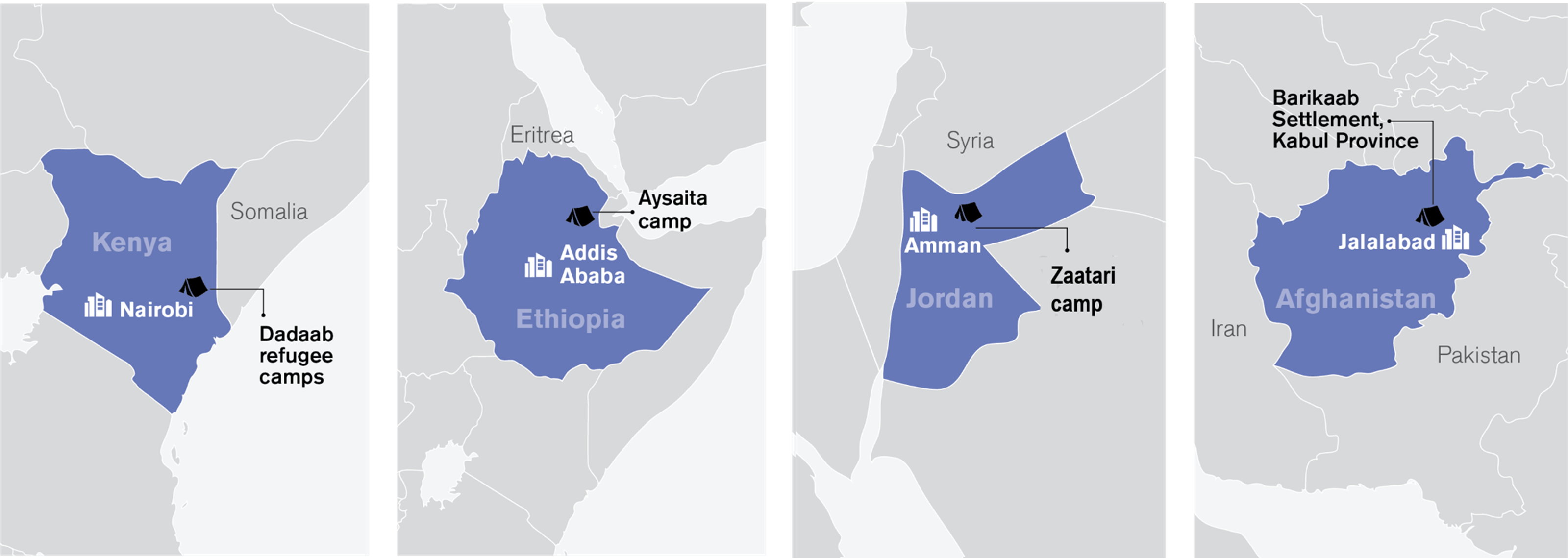For decades, the response by the international community to mass movements of people fleeing war or political persecution has been to provide humanitarian assistance in camps. Despite highly-charged debates on the negative impact of maintaining people in often remote regions and dependent on humanitarian assistance, camps remain the default response to new displacement crises.
Camps are not, however, the choice of the majority of the world’s displaced people, and estimates suggest that over 60% of refugees and at least half of internally displaced persons (IDPs) now live in towns and cities.
The overall aims of this research project are to:
- Build an evidence base for national and local governments, humanitarian agencies and donors on the opportunities and challenges of hosting displaced people in camps vs. urban areas.
- Assess current responses to urban protracted displacement, raising awareness of unmet need and the potential economic and social contributions of refugees and IDP for host cities.
- Support municipal authorities, displaced people, NGOs, organisations of the urban poor and other local actors to use participatory planning to co-produce innovative, inclusive solutions to forced displacement.
The importance of a camp-urban comparison
Camps have captured the attention of the media, relief organisations and academia. But as short-term emergencies turn into protracted displacement, camp living can erode residents’ dignity and increase aid dependency. In response, displaced people are increasingly moving to cities, avoiding camps to seek autonomy and opportunities over dependency and isolation.
The different impacts of camp and urban environments on the lives and livelihoods of refugees, returnees and IDPs have not been systematically evaluated. Relatively little is known about how displaced people in cities interact with local people, institutions, and economies (informal and formal), or how cities can better respond to their needs. This understanding is critical if we are to move towards displacement responses that promote rights, dignity, and wellbeing, and facilitate displaced people’s economic contributions to their host settings.
Key concepts
A desire to promote self-reliance among refugees and IDPs gained renewed emphasis after the affirmation of the Global Compact on Refugees in 2018. The Compact was initiated in response to rising numbers of people displaced by conflict, disasters and climate change and increasing pressure on humanitarian aid budgets. But what does it mean to be self-reliant? How do displaced people themselves understand the term, and how do they think it can be achieved? And how does their enterprise and endeavour contribute to host communities and economies?
The term has no agreed definition or fixed set of indicators by which it can be measured. The starting point for this project is that self-reliance must be more than a measure of income and ability to meet basic needs. Our research will deepen understanding of self-reliance by exploring displaced people’s overall wellbeing and how this contributes to their perceptions of life in the camp and the city. It will also examine the significant and creative ways that displaced people and their networks contribute to the local, national and international economies. Finally, it will lead to new methods of co-production with municipal actors.
Promoting participatory and inclusive city planning
A central component of the research programme is to promote interaction between urban refugees/IDPs, the urban poor, municipal authorities and other local actors. In addition to quantitative and qualitative research, we are supporting a participatory and inclusive planning process in each country, convening 6-monthly stakeholder workshops throughout the project. These will ensure that beneficiaries are involved in the design of research tools, validation of findings and creation of co-produced solutions that support self-reliance, wellbeing and productive livelihoods in cities.
